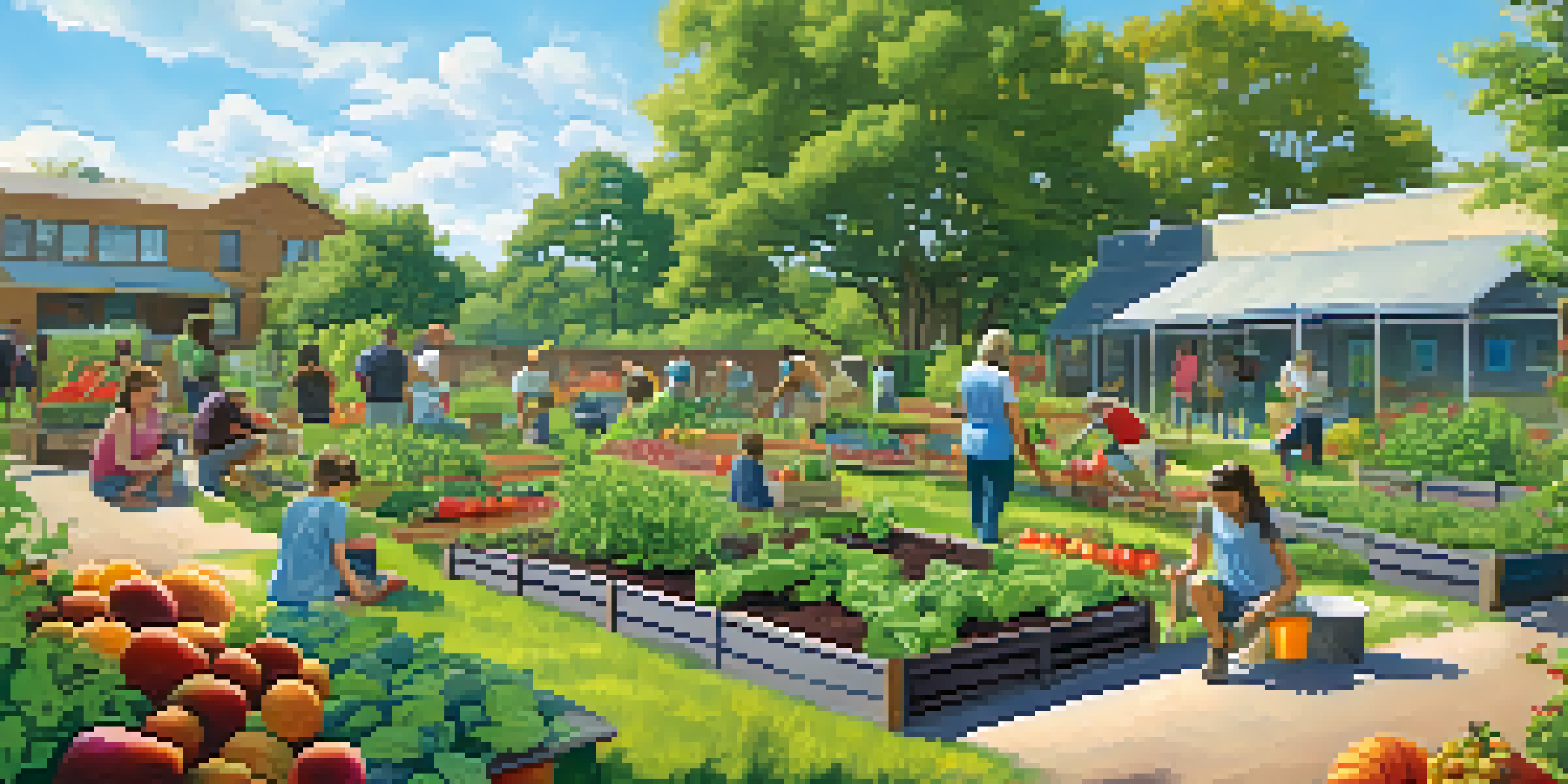The Role of Community in Austin's Environmental Protection

Understanding Austin's Unique Environmental Challenges
Austin, known for its vibrant culture and beautiful landscapes, faces a variety of environmental challenges. Rapid urbanization has led to increased pollution and habitat loss, putting pressure on local ecosystems. These issues highlight the urgent need for community involvement in addressing environmental concerns.
We do not inherit the earth from our ancestors; we borrow it from our children.
Residents are becoming more aware of how their actions impact the environment, prompting them to seek solutions. For example, the growth of local conservation groups reflects a collective desire to maintain Austin's natural beauty. This grassroots activism is crucial for creating sustainable practices and preserving local resources.
Community members often band together to tackle specific environmental issues, demonstrating unity in the face of adversity. Whether it's clean-up events in local parks or campaigns against littering, these initiatives empower residents to take charge of their environment. Understanding these challenges allows the community to work collaboratively toward effective solutions.
Community-Led Initiatives in Environmental Protection
One of the most powerful aspects of Austin's environmental efforts is the range of community-led initiatives that have emerged. Programs like Keep Austin Beautiful mobilize volunteers to clean up local spaces and promote eco-friendly practices. These initiatives not only beautify the city but also foster a strong sense of community engagement.

Local farmers' markets and community gardens have also gained traction, encouraging residents to support sustainable agriculture. These spaces serve as educational hubs, where individuals can learn about organic farming and the importance of local produce. By cultivating these connections, communities are strengthening their commitment to environmental sustainability.
Community Action Drives Change
Austin residents actively engage in grassroots initiatives to address environmental challenges and promote sustainability.
Moreover, many neighborhoods have formed coalitions to address specific environmental issues, such as water conservation and waste reduction. These groups often host workshops and events, providing residents with the tools and knowledge needed to make a difference. The collaborative spirit of these initiatives showcases the power of community involvement in environmental protection.
The Role of Education in Community Engagement
Education plays a crucial role in fostering community engagement in environmental protection. Local organizations and schools are working together to raise awareness about sustainable practices and the importance of conservation. Workshops, seminars, and educational programs create a knowledgeable community that understands the stakes.
The greatest threat to our planet is the belief that someone else will save it.
For instance, programs like the EcoSchools initiative help students learn about environmental stewardship from a young age. This early exposure instills a sense of responsibility toward the planet, encouraging children to become advocates for change. As these students grow, they carry this knowledge into their adult lives, perpetuating a culture of sustainability.
Additionally, community-led educational initiatives often involve hands-on experiences, such as planting trees or building rain gardens. These activities not only teach valuable skills but also create lasting memories that connect individuals to their environment. The more informed the community is, the more empowered they become to take action.
Collaboration with Local Governments and Organizations
Collaboration between communities and local governments is essential for effective environmental protection. Austin's city officials often partner with community organizations to create initiatives that align with residents' values. This relationship fosters transparency and encourages public participation in environmental decision-making.
For example, the city's Climate Equity Plan includes input from community members to address climate change while promoting social equity. By involving residents in the planning process, local governments can better understand the unique needs of their constituents. This collaborative approach ensures that environmental policies are both effective and inclusive.
Education Fosters Environmental Stewards
Community-led educational programs empower individuals, particularly youth, to understand and advocate for sustainable practices.
Moreover, partnerships with local nonprofits and businesses help amplify community efforts. These organizations often provide resources, funding, and expertise to support grassroots initiatives. Together, these collaborations create a more robust framework for environmental protection in Austin.
The Impact of Social Media on Community Awareness
In today's digital age, social media has become a powerful tool for raising awareness about environmental issues. Platforms like Twitter, Facebook, and Instagram enable community members to share information and mobilize support for local initiatives. This online presence helps amplify voices that might otherwise go unheard.
For instance, campaigns like #TrashTag encourage individuals to post before-and-after photos of their clean-up efforts. These visual stories inspire others to take action and highlight the importance of maintaining a clean environment. Social media not only fosters a sense of community but also holds individuals accountable for their environmental impact.
Furthermore, local organizations leverage social media to promote events and share educational content. This approach broadens their reach and connects with a diverse audience, encouraging more residents to get involved. By harnessing the power of social media, communities can effectively rally support for environmental protection initiatives.
Volunteer Efforts and Their Lasting Impact
Volunteering is at the heart of Austin's community-driven environmental protection efforts. Countless residents dedicate their time and energy to various projects, from tree planting to wildlife conservation. These volunteer opportunities not only benefit the environment but also foster a sense of camaraderie among participants.
For example, events like the annual Austin Earth Day Festival draw thousands of volunteers who come together to celebrate and protect the planet. These gatherings create a shared sense of purpose and highlight the collective impact of individual actions. When people see the tangible results of their efforts, it motivates them to continue contributing to environmental causes.
Collaboration Enhances Environmental Efforts
Partnerships between local governments, organizations, and residents create effective strategies for environmental protection in Austin.
Moreover, volunteering often leads to ongoing relationships and collaborations within the community. Many volunteers become passionate advocates for environmental issues, inspiring others to join their cause. The lasting impact of these volunteer efforts extends far beyond the initial event, creating a ripple effect of positive change.
Celebrating Successes and Future Goals
As Austin's community continues to engage in environmental protection, it's important to celebrate successes along the way. Recognizing achievements, whether big or small, helps maintain momentum and encourages ongoing participation. From reducing litter in local parks to achieving significant water conservation goals, every victory counts.
Community events, such as awards ceremonies and recognition programs, highlight the hard work of individuals and organizations dedicated to environmental causes. These celebrations not only honor the past but also inspire future efforts. By showcasing successful initiatives, communities can motivate others to get involved in environmental protection.

Looking ahead, Austin's community aims to tackle even more ambitious goals, such as enhancing biodiversity and promoting climate resilience. As residents build on their successes, they also foster a culture of innovation and collaboration. The future of Austin's environmental protection efforts is bright, driven by a passionate community ready to take action.